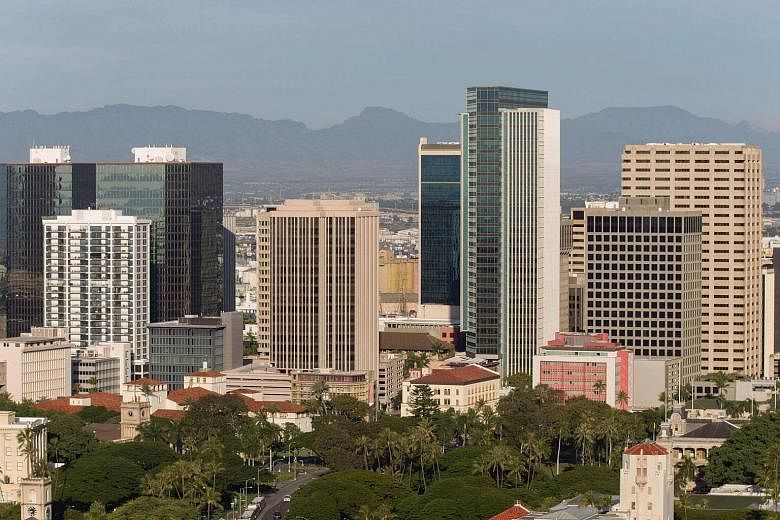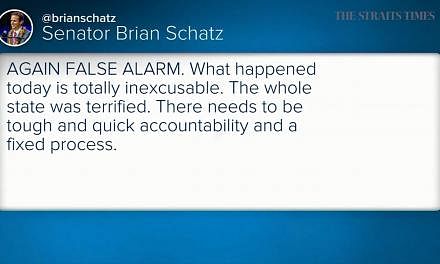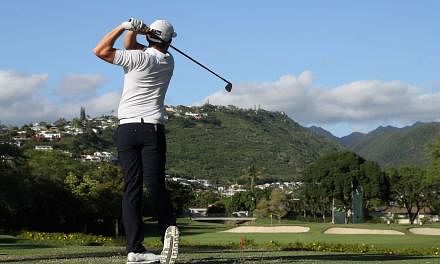WASHINGTON - Dr Denny Roy grew up during the Cold War seeing "fallout shelter" signs on certain buildings around town, viewing cartoonish TV public service messages telling people what to do when they heard air raid sirens, and participating in "disaster drills" at school.
But that ended a long time ago. So early on Saturday (Jan 13) morning in bucolic Honolulu, when Dr Roy was watching a basketball game on television and saw the warning "Ballistic missile threat inbound to Hawaii. Seek immediate shelter. This is not a drill", he for the first time felt the "physical sensation of terror", he told The Straits Times.
But Dr Roy is a political science professor and Senior Fellow at the East West Centre. In about 60 seconds his intellect took over.
North Korea has demonstrated the range of its missiles but not their accuracy, he told himself. Targeting Hawaii would mean instant retaliation and the end of Kim Jong Un and his regime. Why would Mr Kim do this when North and South Korea had just held talks.
But the episode did bring home for the first time after the Cold War the reality to ordinary people that the chance of nuclear war is back.
It also came as President Donald Trump seeks more nuclear weapons for the US. With conventional arms transfers increasing globally, and more nuclear weapons on the cards, comes the option to use them, and the chance of mistakes and miscalculations.
"Now some of us in Hawaii have experienced what you could call the return of nuclear war anxiety," Dr Roy wrote in an e-mail.
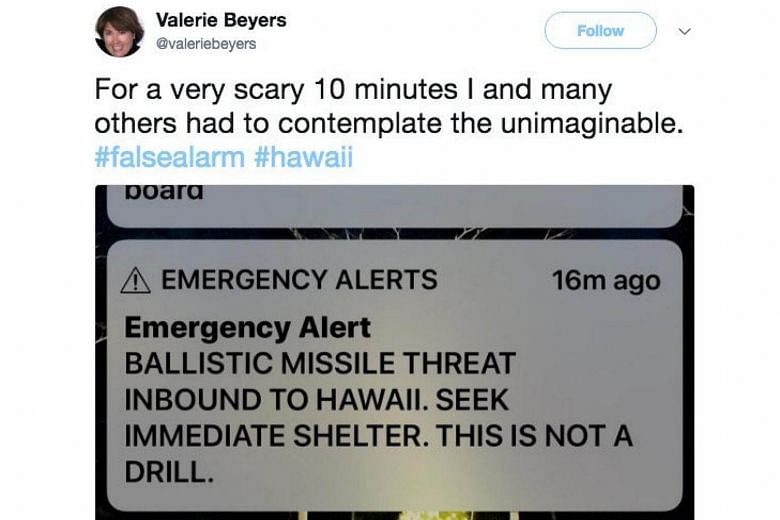
During his 2016 campaign, President Trump sent mixed signals on his nuclear policy, saying "I will be the last to use nuclear weapons. It's a horror to use nuclear weapons" but adding that he would "never ever rule it out".
He has also insisted on modernisation of America's nuclear arsenal. This many analysts agree is necessary.
America's 2018 Nuclear Posture Review (NPR) due next month - but apparently leaked and reported in the Huffington Post last week - seeks more low yield nuclear weapons as "supplements" that will "enhance deterrence". The document cites the need to match Russia's low yield nuclear weapons.
This has raised concerns among security analysts.
"The Trump Nuclear Posture Review is as about as bad as expected, calls for new, 'more usable' nuclear weapons and expands the number of scenarios that might lead Trump to use nukes," Mr Daryl Kimball, Director of the Arms Control Association said in a tweet.
In an e-mail to The Straits Times, Mr Kimball wrote: "The false missile attack alarm in Hawaii is one of many signs that we are entering a new and more dangerous nuclear era."
"Nuclear accidents and mistakes...can (happen) and will lead to miscalculation, which can lead to catastrophe if we or our nuclear adversaries launch a real attack in response to a false alarm or a poorly phrased presidential tweet," he warned.
"Rather than actively seeking to engage other nuclear actors to reduce these risks through smart diplomacy, the Trump administration is adopting a nuclear strategy that expands rather than narrows the circumstances in which the US might use nuclear weapons," he added.
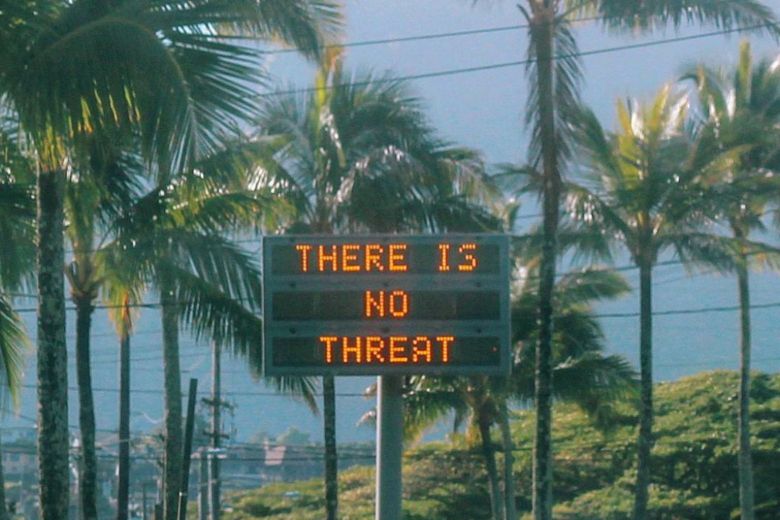
This comes also as a debate in security and defence policy circles and on Capitol Hill in Washington, on whether there should be some checks and balances on President Trump's power to order a nuclear strike.
Mr Will Saetren, a research associate at the Institute for China-America Studies in Washington DC, told The Straits Times: "Taken alone, this (false alarm in Hawaii) wasn't that big a deal. But given this President, and the strategic environment he has created, it could lead to misinterpreted signaling that could spark a war that nobody really wants."
"The real fear is that North Korea could see this as a legitimate attempt by the Americans to use this as a pretext to launch a pre-emptive strike on North Korea."
On the NPR, he said: "The US can meet all of its deterrence requirements with a reduced arsenal. We have to invest in command and control and updating what we have decided to keep. But... giving ourselves options and fooling ourselves that even low yield nuclear weapons are somehow usable, is doing ourselves a really big disservice."
The last five words of Saturday's false alarm have a special resonance in Honolulu, where a gleaming white monument to those who died in Japan's devastating Dec 7, 1941 surprise attack marks the azure waters of Pearl Harbour.
"Air raid Pearl Harbor. This is not a drill" was the frantic radio message that went out that day as American warships burned and sank under the onslaught.
The New York Times, in an editorial on Sunday, wrote: "Authorities quickly announced that the alert was a mistake. But it made tangible the growing fears that after decades of leaders trying to more safely control the world's nuclear arsenals, President Trump has increased the possibility of those weapons being used."
Dr Roy, who specialises in the geopolitics and security of Asia Pacific, and has authored several books, is not very surprised at the turn of events.
He wrote: "Frankly, I'm rather surprised that we've had a long period of relatively little worry about the use of nuclear weapons since the end of the Cold War, even though nuclear arsenals persisted during that time and additional countries acquired them."

